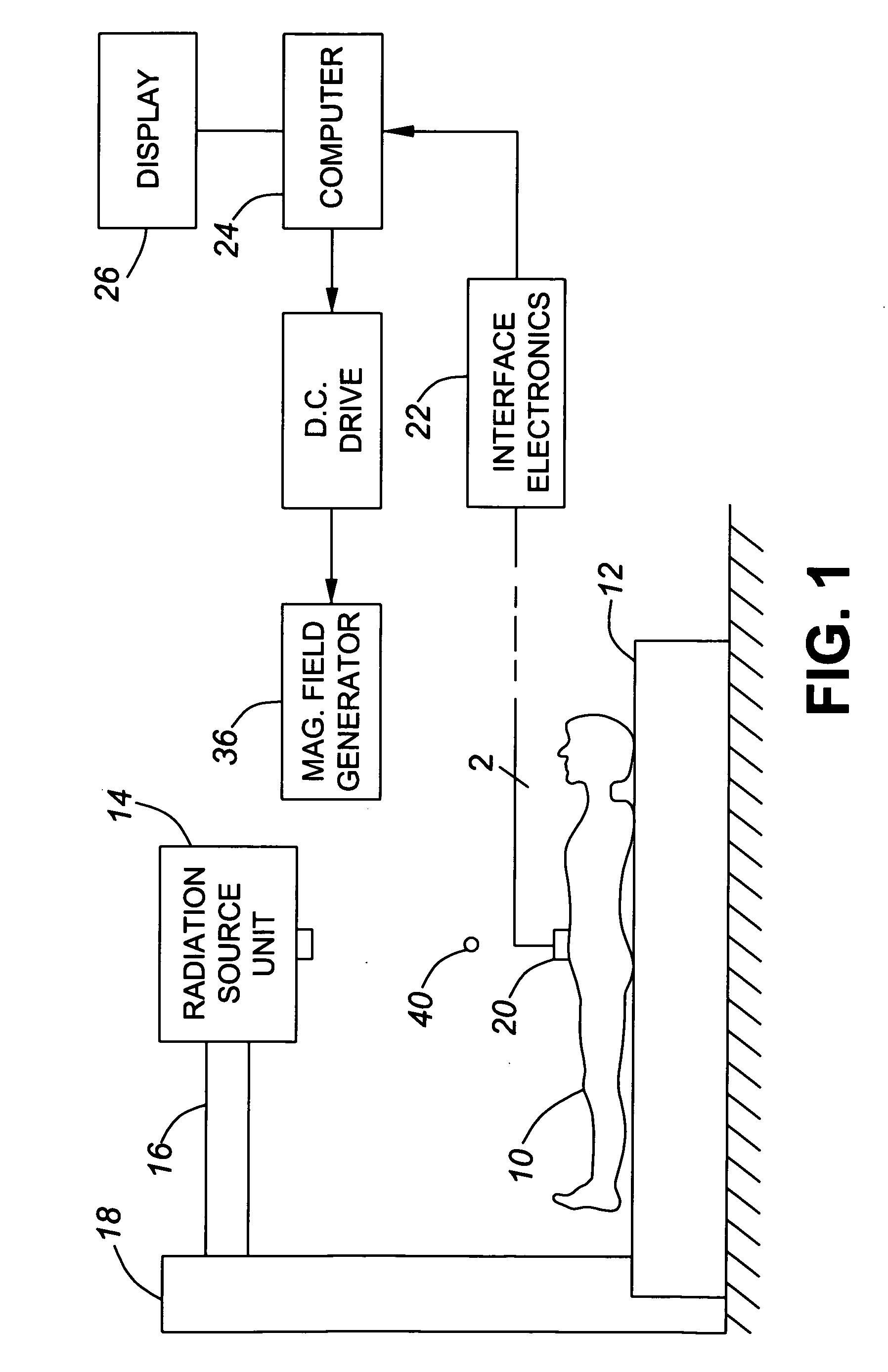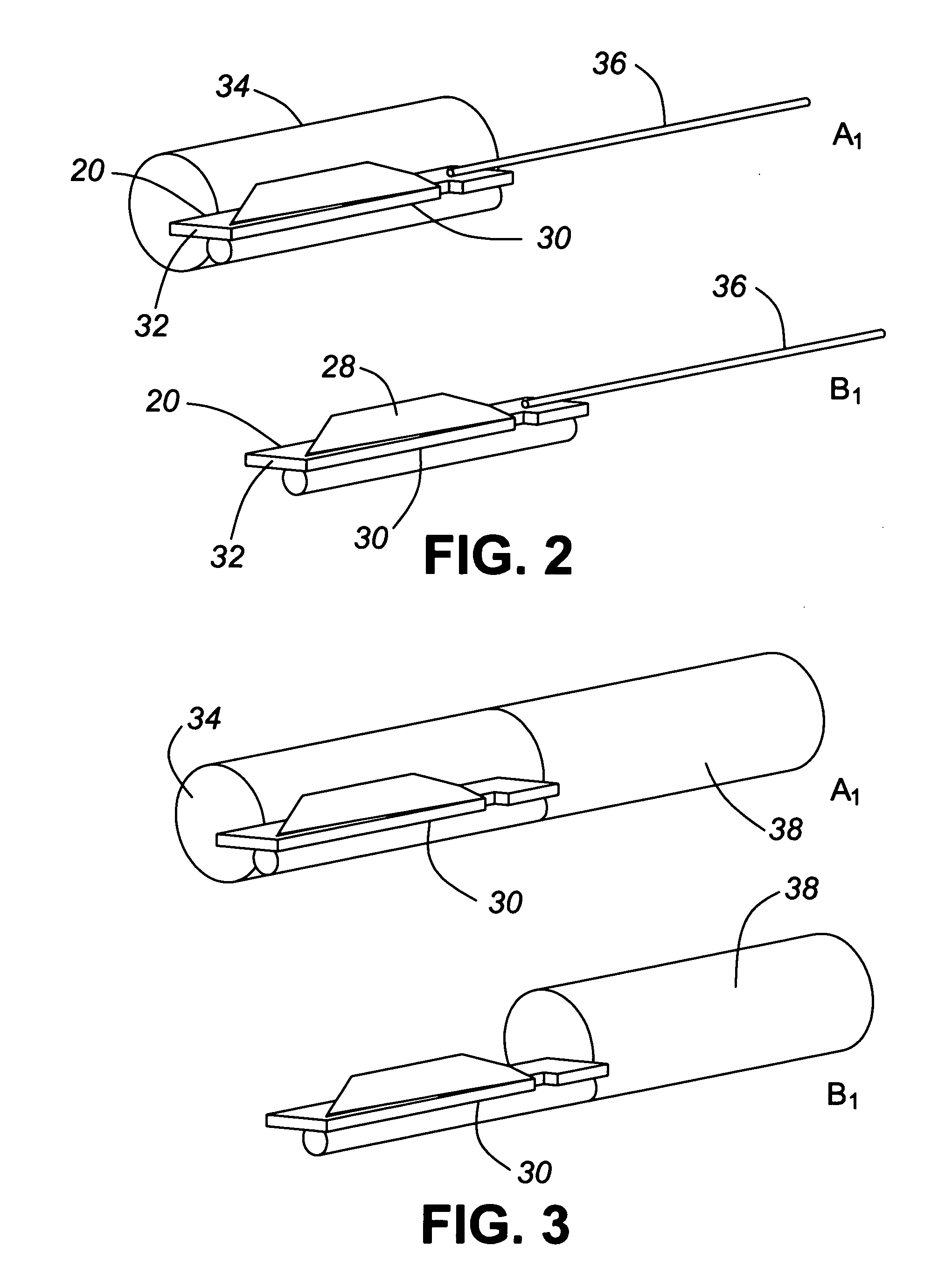Radiation dosimetry apparatus and method, and dosimeter for use therein
a technology of radiation dosimetry and dosimeter, which is applied in the field of radiation dosimetry apparatus and methods for measuring radiation, and to dosimeters, and can solve the problems of reducing the accuracy and precision of radiation delivery, affecting the accuracy of radiation delivery, and affecting the accuracy of dose delivery and position accuracy
- Summary
- Abstract
- Description
- Claims
- Application Information
AI Technical Summary
Benefits of technology
Problems solved by technology
Method used
Image
Examples
Embodiment Construction
[0032]FIG. 1 illustrates a patient 10 lying on a table 12 beneath a radiation source unit 14 carried by a gantry 16 extending from a support 18 of a known kind of radiation therapy machine which irradiates a target volume on or in the patient's body in known manner. Such radiation therapy or surgery equipment is well known to those skilled in this art and so will not be described in detail herein. FIG. 1 also illustrates dosimetry apparatus for monitoring the radiation, which comprises a dosimeter 20 shown, for ease of depiction, mounted upon the patient's abdomen, and having at least one radiation detector for detecting radiation levels over a prescribed time period and providing corresponding readings or doses by way of an electronic interface unit 22, sometimes called a reader, which converts the radiation level readings into a digital format, and sends them to a computer 24 for analysis and display of the radiation dose on a display device 26, e.g., a computer monitor. The compu...
PUM
 Login to View More
Login to View More Abstract
Description
Claims
Application Information
 Login to View More
Login to View More - R&D
- Intellectual Property
- Life Sciences
- Materials
- Tech Scout
- Unparalleled Data Quality
- Higher Quality Content
- 60% Fewer Hallucinations
Browse by: Latest US Patents, China's latest patents, Technical Efficacy Thesaurus, Application Domain, Technology Topic, Popular Technical Reports.
© 2025 PatSnap. All rights reserved.Legal|Privacy policy|Modern Slavery Act Transparency Statement|Sitemap|About US| Contact US: help@patsnap.com



